Day 1. Wednesday 12th September 2012
The flight from Heathrow was ahead of time and Stephen met the group at the new terminal building at Gibraltar airport. After walking across the border into Spain we loaded the minibus and headed overland through Jerez to Bonanza and the Algaida on the Guadalquivir River to have lunch then a spot of birding.
Quite a few raptors had been seen fleetingly from the vehicle en route as were some passerines and hirundines. Blue skies and bright sunshine was something that most of the group were hoping for, after the dreadful summer weather in the UK.
We took the motorway across to the Guadalquivir, skirted the pine Forest at Algaida and met Antonio the owner at Venta el Raspa for lunch. After a good meal we had a look around the salt pans quickly finding many birds. Greater Flamingoes were seen in large numbers and most of the salt pans away from the activity of trucks around the salt ‘harvesting’ area, contained many different types of waders which included Dunlin, Black-tailed Godwit, Black-winged Stilt, Greenshank, Common Redshank, Green and Common Sandpiper, Grey, Greater, Little and Kentish Plovers, Little Stint, Curlew Sandpiper and Sanderling. On some agricultural land we saw a flock of about 20 migrating juvenile Ruddy Turnstones and on one of the freshwater ponds some Common Snipe were seen.

We travelled around the area looking for Slender-billed Gulls and found some after passing two Red Kites that sat on an electric pylon. Sardinian Warblers flitted through the salt scrub, Crested Larks rose off the dusty paths and a young Woodchat Shrike sat on a fence.
At another salt pan we watched a huge flock of Pied Avocets take to the air. Here we also saw a single Knot, some Little Terns, Black-headed Gulls and a Whimbrel. A few Marsh Harriers were seen some distance off, with heads down, quartering the mud banks. Yellow-legged and Lesser Black-backed Gulls were on the shore near Bonanza’s harbour wall.
We had a fairly long drive up river, of course taking the faster motorway route but still managing to see Short-toed Eagles, Griffon Vultures and plenty of White Storks. A lovely male Peregrine Falcon was also spotted on a post and as we got close to El Rocio, a flock of about 20 Azure-winged Magpies flew across the road to welcome us.
Sitting outside taking dinner in El Rocio’s square is quite an unique experience to take in all the special sights and sounds of this ‘wild west town as riders stopped to take a beer or sherry at the specially constructed high bar where they could rest their glasses and chat. Moorish Geckos hunted insects attracted by the hotel lights and tiny Pipistrelle and the larger Daubenton’s Bats flew overhead.
After a log day’s travel came a welcome bed at our hotel.


Day 2. Thursday 13th September
The sun is late rising in September in southern Spain and it’s not until eight in the morning that first light sweeps across the landscape. After a good breakfast we scanned with our telescopes across the dry lagoon in front of the hotel and quickly picked up a distant adult Spanish Imperial Eagle sitting high in a bare Eucalyptus tree. The rising sun showed the golden crown and white epaulets. Although some way off, it was good to see this star attraction bird of the Coto Donana Natonal Park on our very first morning.
Another cloudless sky with very light winds set the theme as we headed off for in the mini-bus to the other side of Villamanrique de La Condessa and along the flat expanse of the rice fields surrounding Isla Mayor which is the largest rice producing area in Europe. At this time of the year the ground is extremely dry and resident and migrating birds find food all through this artificially wet agricultural area with the flooded paddy fields providing food for many different types of birds.The nearby Guadalquivir River provides an enormous amount of fresh water that covers the landscape. En rote a few Spotted Flycatchers and some Woodchat Shrikes were seen perched on the roadside fences. Ravens sat or were seen in flight and Azure-winged Magpies were present in good numbers with their cousins the Common Magpie.
Montagu’s Harrier was the first migrating raptor we caught up with at close range and this particular juvenile was hunting along the fringes of the rice field close to the road. Black-winged Kite was next to be found with another juvenile hovering on some tamarisk and scrub.
There were plenty of Little Egret, Grey Heron, Cattle Egret and Black-crowned Night Heron to be seen as we approached the fairly dried out lagoon at Dehesa de Abajo. Here, thousands of White Stork, Grey Heron, Greater Flamingo, various duck species and many different waders fed or rested. Red-crested Pochard, Common Pochard, Northern Shoveller and Mallard were present with Pied Avocet, Ruff, as well as Wood , Common and Green Sandpipers. Masses of Glossy Ibis trailed long lines in the bright blue September sky as Great Egrets flew around the area. Common Coot and Moorhens fed along the muddy edges as several Willow Warbler and a single Cett’is Warbler were seen in the scrubby edges. Jackdaws sat around in the distant trees and a few Black Kites rose on the thermals above the lagoon.
Along the vegetation and in the rice-fields we saw lots of newly emerged and some adult Scarlet and Common Darters as well as some of the stunning Lesser Emperor Dragonflies. Black Percher was another dragonfly that was seen and photographed by some.
Driving through Isla Mayor we explored a tree line on the edge of a canal and found a large roost of Squacco and Night Herons. Red Signal Crayfish, an introduced species are trapped by the locals and we saw one trap full of them submerged in the corner of the rice field’s freshwater.
Yellow Crowned Bishop was an introduced bird on the southern side of the Iberian peninsula and we watched a displaying male flying around like a huge bumblebee! We were to see many more later in the day.
Taking the local ‘menu del dia’ we had a break from the already very hot sun. Later we continued along the dusty tracks finding many perched raptors that included Short-toed Eagles, Common Buzzards, Common Kestrels and an Osprey. More than a dozen Black Storks flew off from the ditches with lots of Great white, Cattle and Little Egrets. White Storks were everywhere and in the distance we saw a huge flock of over 150 Eurasian Spoonbills wheeling in the sky moving from one feeding place to another. Later we found a group of them standing on the side of the track and when they took off you could see that most were juvenile birds, showing black wing tips.
More Bishops and some Common Waxbills were seen as were Zitting Cisticolas another Cetti’s and Woodchat Shrike as well as some Sedge and Willow Warbler. In the distance clouds of Glossy Ibis road and we passed a second Black winged Kite hunting across the landscape.
To end the day we came across five juvenile Pin tailed Sandgrouse sitting motionless in a bare ploughed field very close to the road. As the birds edged slowly off we had great views of this late are still quite rare breeding bird.
Sitting in the square taking dinner outside, we mulled over our day and everyone seemed quite content with all the sight and volumes of different species seen during the day. On our way back to our rooms we saw a Stripeless Tree Frog on a wall and the usual Moorish and Turkish Geckos scuttled in search of moths around the lights.
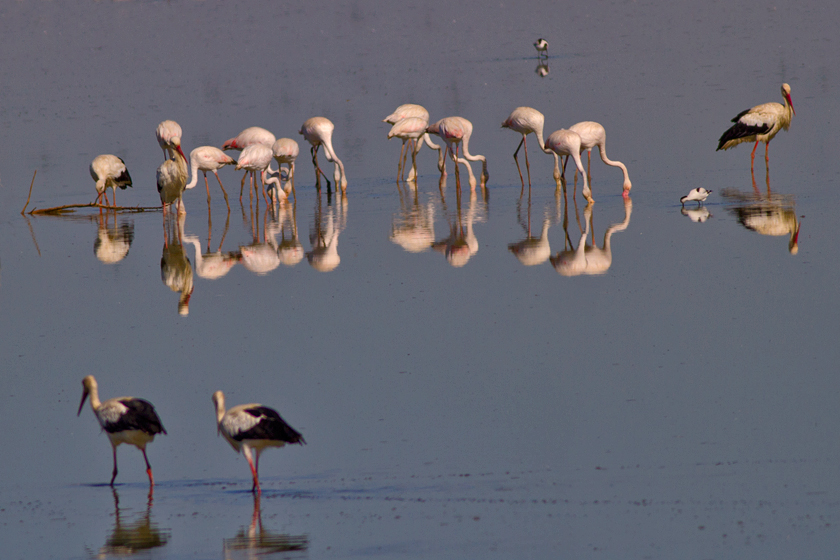




After breakfast we set off south then east to the estuary and tidal marched of the Odiel. A world heritage site on the due of Huelva some distance from the Coto Donana.
En route we stopped off at the Acebuche Centre to take an early morning walk through the pine woods and picnic area where there are always a good population of Azure-winged Magpies. We saw lots of them at very close range and managed to see our first Pied Flycatcher as well as a Wryneck.
We drove along the coast road to Huelva and across the bridge into the Odiel Marshes, stopping off at the visitors centre there to pick up a few more species for our list. Some Sandwich Terns and a few Audouin’s Gulls were seen close to the salt works and on the remaining freshwater that was left at the centre we saw Teal, Garganey, Gadwall as well as Mallards. Red crested Pochards flew overhead and as we continued into the marshes we stopped to watch an exhausted looking Honey Buzzard on a post. A short time later a single Osprey came past. On the tidal mud flats we watched many Whimbrel, Grey Plover, Oystercatcher, Little Stint, Dunlin, Sanderling, Black-tailed Godwit, Ruddy Turnstone, Kentish and Ringed Plovers, Common Redshank, Greenshank and Black-winged Stilt. Passing Common Swifts and more Red-rumped Swallows flew past and a few Marsh Harriers hunted over the marshes. A Great Cormorant was also seen flying overhead.
Scarlet Darters were around and we watched some passing Lesser Emperor dragonflies. There was little passerine movement with Willow Warblers putting on a great display on a fence but not much else.
We took lunch at a local Village and sheltered in the heat of another scorching day. After lunch we looked in vain for Dartford Warbler but finding Common Redstart, Bonelli’s Warbler.
At the woodland walk around the Palacio de Acbron we found Great Spotted and Green Woodpeckers, albeit fleeting views. Lots more Pied and Spotted Flycatchers were in the woodland as a Booted Eagle took off and flew out of the woods and a lone Hobby came over the canopy. More Bonell’s Warblers a few Garden Warblers and a Wren flew past as we walked slowly on the boardwalks and pathways. Chaffinch, Great Tit, Sardinian Warbler and Spectacled Warbler were also watched and a few butterflies were seen that included ……
We came back to the hotel around 6pm after watching Southern Grey (Iberian) Shrike on some roadside wires. We showered and relaxed a bit before going over the bird list and new additions for the day. Dinner was again taken outside on the square.
Day 5. Saturday 15th September
After breakfast we said our farewells to El Rocio and started our journey south to The Strait of Gibraltar. The sun was shining and it was going to be another fine day. We decided to have one last look for Marbled Teal and White-headed Duck even although the water levels were so low. At Trebujena, favourite spot on the Guadalquivir River’s marshes and small tidal lagoons we found very little activity other than large numbers of White Storks, Grey Herons and egrets. Lots of Black-winged Stilts and one new bird, a Greylag Goose were seen but alas the Bajo Guadalquivir reserve was completely dried out although the river itself was still at normal levels.
Red Kite and a few Marsh Harriers with some Montagu’s Harriers were seen en route over more rice fields as were Greenfinches. En route we stopped at Benalup and took lunch at Los Monteros.
We drove into the through the north-western side of La Janda and found a Whinchat, Reed Warbler, a lovely female Hen Harrier, some Pheasants and Red-legged Partridges. Striped-necked Terrapins were seen on the main collector canal and there were lots of Marsh and Monty’s around as well as lots of White Storks.
Dinner at our hotel was taken on the hotel’s restaurant terrace and we retired to our bungalows after a good meal.


Stephen Daly
Stephen Daly, has been birding since he was eight years old in his native Scotland. After living in Germany and France he established Andalucian Guides the successful birding and wildlife tour company on The Strait of Gibraltar in Spain and has been living here since 2001. Photographing birds in flight is one passion and his photos can be found in many books, magazines and journals. Studying bird behaviour and bird migration are two other positive aspects of being based on one of the busiest migration routes on Earth.
- Web |
- More Posts(81)
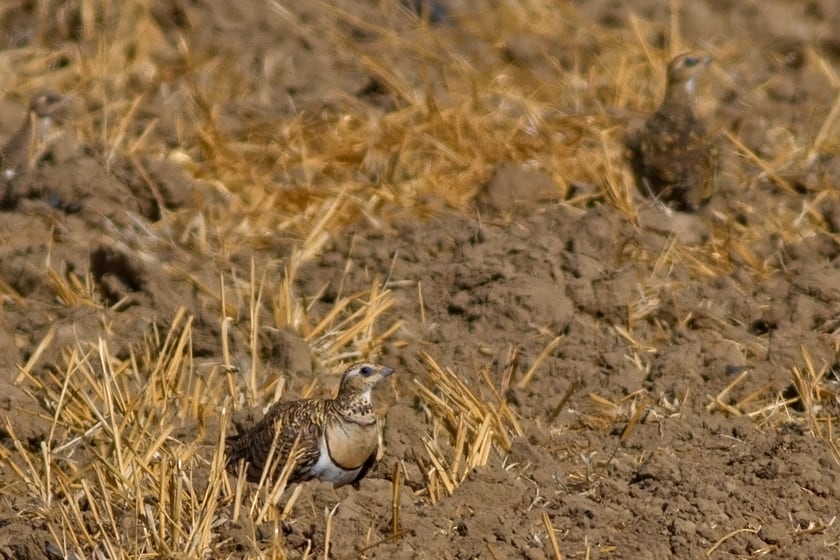








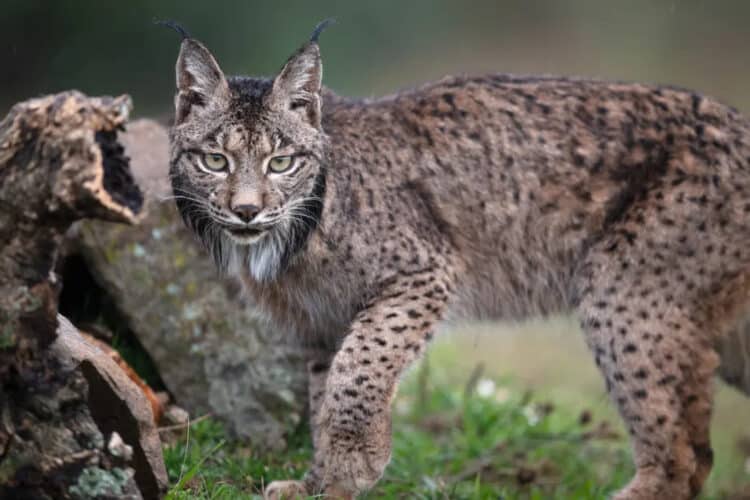
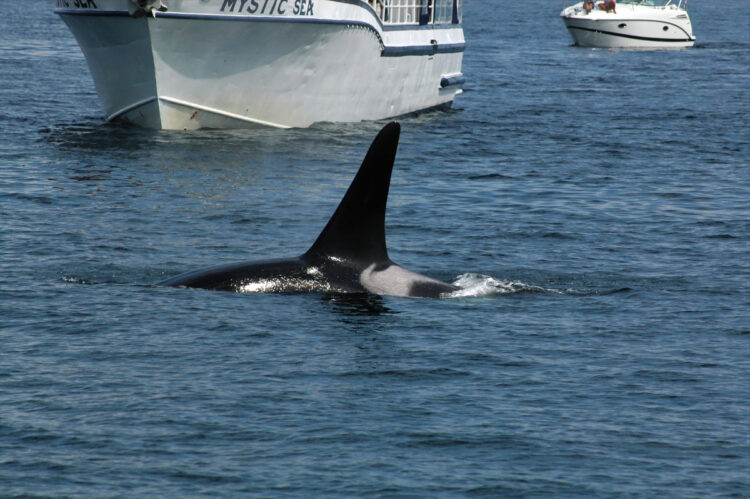
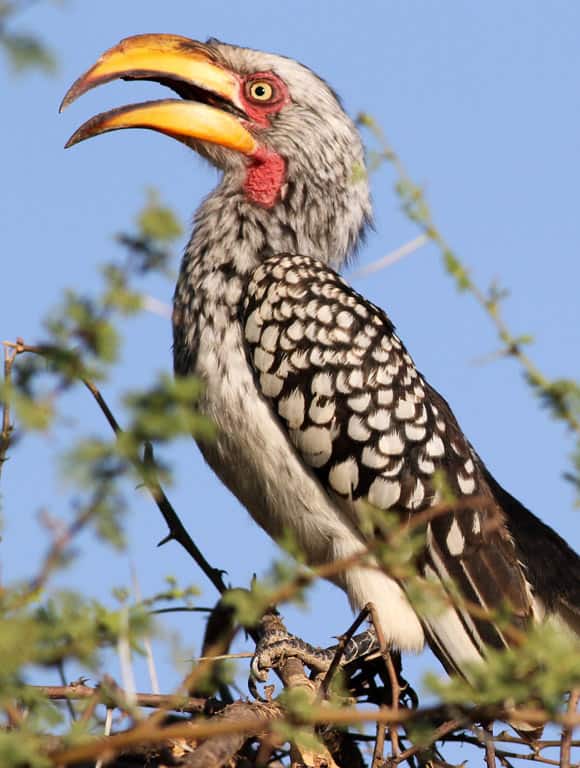

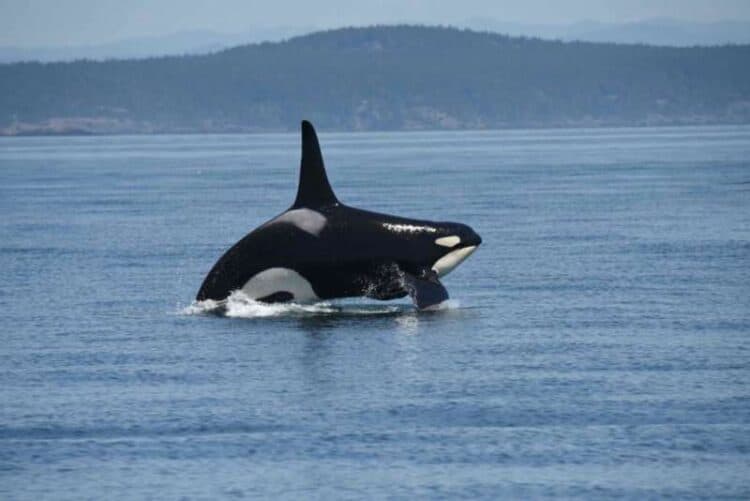
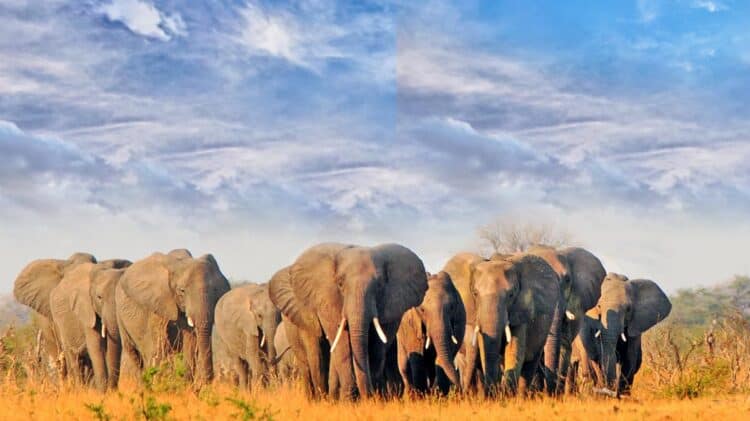
Leave a Reply